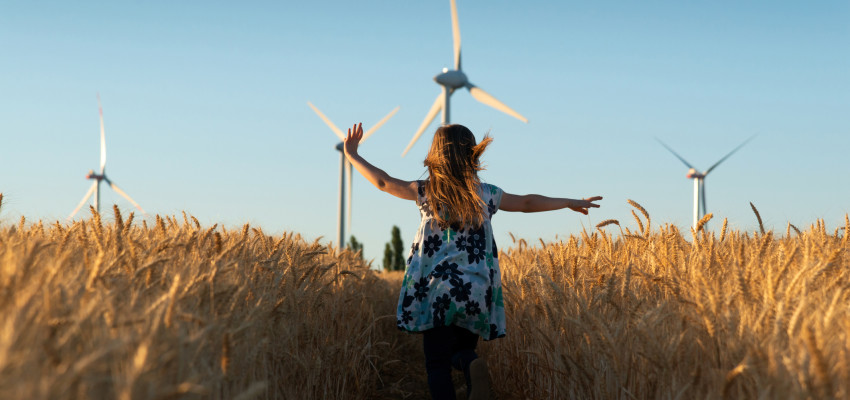By Hannah Becker on December 17, 2018
3 Ways Alternative Energy Fuels Kansas Agriculture

Kansas is one of the nation’s leaders in alternative energy production. Biofuels, wind, solar--Kansas has it all. Thanks to its strategic location in the American heartland, Kansas can harvest a variety of alternative fuel sources and transport energy resources to communities all across the United States.
Energy innovation isn’t new to the Sunflower State. Following the devastating destruction of an EF-5 tornado, Greensburg rebuilt an eco-friendly community fueled 100 percent by renewable energy. Greensburg was the second city in the entire country to convert their entire community – commercial and residential – to alternative energy sources. It’s this type of trailblazing initiative that keeps Kansas at the forefront of a variety of industries.
Here are three types of alternative energy sources currently being harnessed in Kansas:
Wind Energy in Kansas
Kansas is the second windiest state in the United States – something that comes as no surprise to anyone who’s ventured out onto the windy Kansas prairie. Wind is a powerful resource when it comes to energy and is the fastest-growing sector of energy technology. Harnessing wind for energy use provides a cost-effective and environmentally friendly strategy for energy production.
In 2017, Kansas was the fourth largest producer of wind energy in the nation. Wind turbine farms like those in Coffee and Ford County power homes and businesses across the state. More than 30 percent of energy utilized by Kansas residents last year was generated from wind farms.
Farmers and ranchers have been utilizing wind technology to produce energy in Kansas since the 1800s. Smaller scale wind turbines were used to pump water and generate power. Ever driven out in the Flint Hills and seen historic windmills in a cattle pasture? They may have been remnants of Kansas’ first alternative energy innovation.
Renewable Fuels in Kansas
While most of us are familiar with the term “biofuels,” many are unaware that biofuels start out as crops grown right here in the Sunflower State. Farmers grow crops like corn which can be processed and turned into ethanol – a popular fuel source for equipment and vehicles.
Kansas is one of the top 10 ethanol-producing states, and the state's ethanol plants have a combined production capacity of more than 500 million gallons a year. The distiller's wet grains that remain after the fermentation process are often utilized for feed in cattle production – another area of agriculture that Kansas remains at the forefront.
Renewable fuels like ethanol aren’t exactly a new thing. Henry Ford’s Model T ran on ethanol – a substance that was banned during the Prohibition as it was considered an “alcoholic beverage.”
Solar Energy in Kansas
Solar power is emerging as a popular energy option for communities across Kansas. Averaging more than 120 clear and sunny days a year, Kansas provides the perfect environment to harness UV rays for energy use.
Kansas universities have prioritized solar research and education as they prepare for the future of energy technology. The NSF EPSCoR Kansas Center for Solar Energy Research was founded to further the study of solar innovation in Kansas. Additionally, Johnson County Community College offers a solar energy associate degree to help provide qualified professionals to meet upcoming industry demands.
The USDA’s Rural Development Center offers several grant programs to help farmers and ranchers implement alternative energy sources, like solar, into their agriculture operation. As solar technology continues to develop, Kansas farmers and ranchers may find themselves harnessing sunlight for energy use in neighboring communities. It will be interesting to see how solar technology continues to advance and impact Kansas.
The Future of Alternative Energy in Kansas Agriculture
Kansas farmers and ranchers are very involved in clean energy production, as they grow crops like corn that can be used to produce ethanol, and partner with wind and solar companies to provide the land necessary for energy harnessing. The United States Department of Agriculture (USDA) offers several programs to help farmers and ranchers implement alternative energy sources on their farm. By updating their agriculture operation’s energy sources to include innovative alternatives like wind turbines and solar panels, farmers and ranchers can help conserve natural resources and protect the environment.


